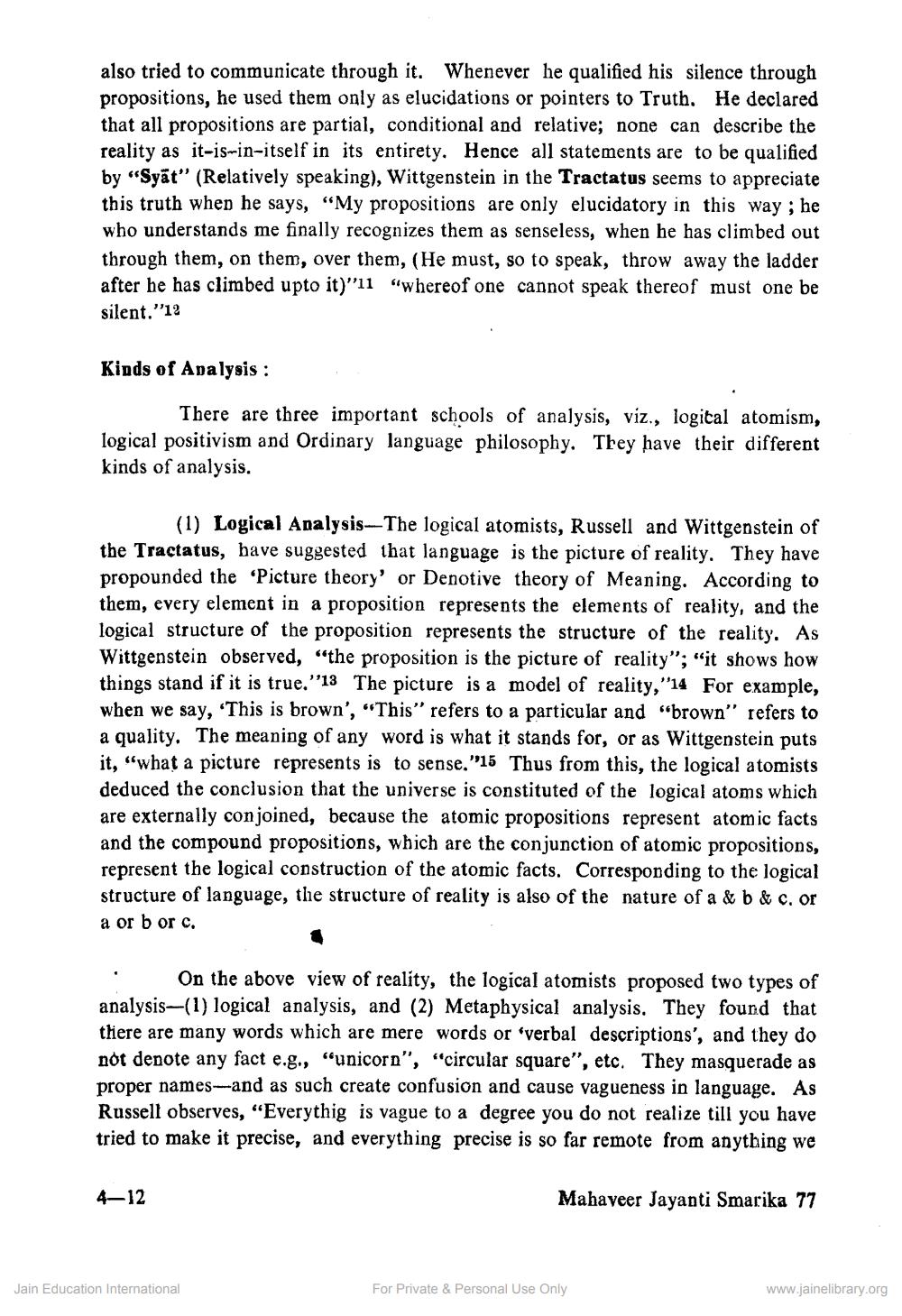________________
also tried to communicate through it. Whenever he qualified his silence through propositions, he used them only as elucidations or pointers to Truth. He declared that all propositions are partial, conditional and relative; none can describe the
ality as it-is-in-itself in its entirety. Hence all statements are to be qualified by "Syāt" (Relatively speaking), Wittgenstein in the Tractatus seems to appreciate this truth when he says, "My propositions are only elucidatory in this way ; he who understands me finally recognizes them as senseless, when he has climbed out through them, on them, over them, (He must, so to speak, throw away the ladder after he has climbed upto it)"11 "whereof one cannot speak thereof must one be silent."12
Kinds of Analysis :
There are three important schools of analysis, viz., logital atomism, logical positivism and Ordinary language philosophy. They have their different kinds of analysis.
(1) Logical Analysis-The logical atomists, Russell and Wittgenstein of the Tractatus, have suggested that language is the picture of reality. They have propounded the ‘Picture theory' or Denotive theory of Meaning. According to them, every element in a proposition represents the elements of reality, and the logical structure of the proposition represents the structure of the reality. As Wittgenstein observed, “the proposition is the picture of reality"; "it shows how things stand if it is true."'13 The picture is a model of reality,"14 For example, when we say, 'This is brown', "This” refers to a particular and “brown" refers to a quality. The meaning of any word is what it stands for, or as Wittgenstein puts it, "what a picture represents is to sense."15 Thus from this, the logical atomists deduced the conclusion that the universe is constituted of the logical atoms which are externally conjoined, because the atomic propositions represent atomic facts and the compound propositions, which are the conjunction of atomic propositions, represent the logical construction of the atomic facts. Corresponding to the logical structure of language, the structure of reality is also of the nature of a & b & c. or a or b or c.
On the above view of reality, the logical atomists proposed two types of analysis (1) logical analysis, and (2) Metaphysical analysis. They found that there are many words which are mere words or *verbal descriptions', and they do not denote any fact e.g., “unicorn", "circular square", etc. They masquerade as proper names_and as such create confusion and cause vagueness in language. As Russell observes, "Everythig is vague to a degree you do not realize till you have tried to make it precise, and everything precise is so far remote from anything we
4-12
Mahaveer Jayanti Smarika 77
Jain Education International
For Private & Personal Use Only
www.jainelibrary.org




